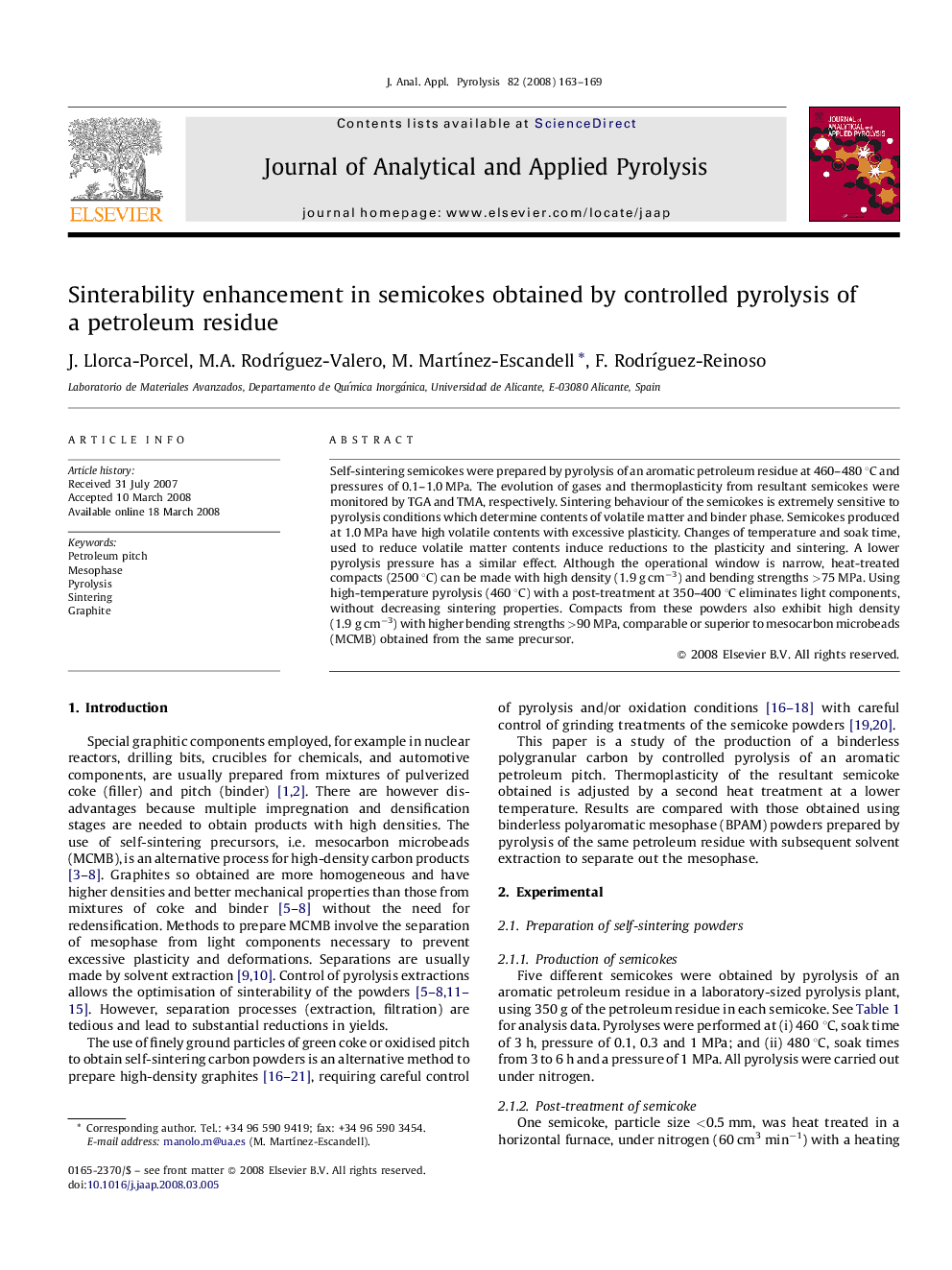| Article ID | Journal | Published Year | Pages | File Type |
|---|---|---|---|---|
| 1197701 | Journal of Analytical and Applied Pyrolysis | 2008 | 7 Pages |
Self-sintering semicokes were prepared by pyrolysis of an aromatic petroleum residue at 460–480 °C and pressures of 0.1–1.0 MPa. The evolution of gases and thermoplasticity from resultant semicokes were monitored by TGA and TMA, respectively. Sintering behaviour of the semicokes is extremely sensitive to pyrolysis conditions which determine contents of volatile matter and binder phase. Semicokes produced at 1.0 MPa have high volatile contents with excessive plasticity. Changes of temperature and soak time, used to reduce volatile matter contents induce reductions to the plasticity and sintering. A lower pyrolysis pressure has a similar effect. Although the operational window is narrow, heat-treated compacts (2500 °C) can be made with high density (1.9 g cm−3) and bending strengths >75 MPa. Using high-temperature pyrolysis (460 °C) with a post-treatment at 350–400 °C eliminates light components, without decreasing sintering properties. Compacts from these powders also exhibit high density (1.9 g cm−3) with higher bending strengths >90 MPa, comparable or superior to mesocarbon microbeads (MCMB) obtained from the same precursor.
